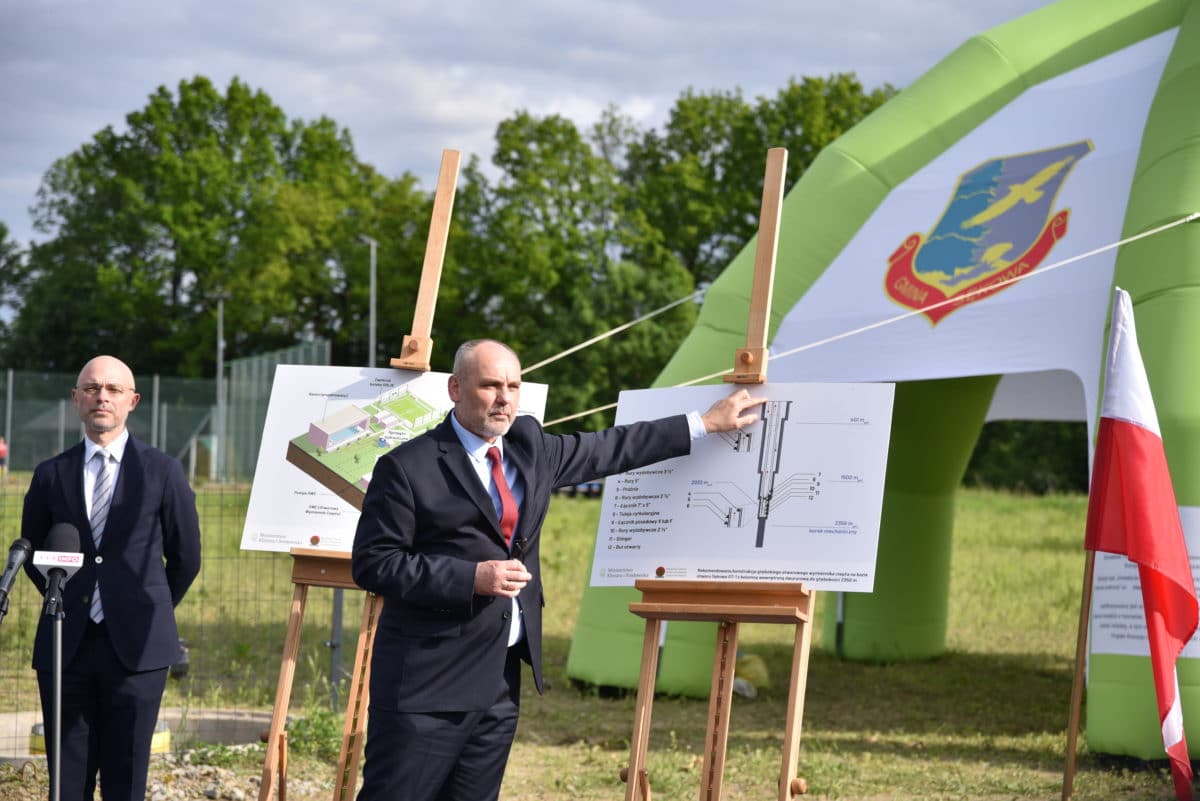The Polish Ministry of Environment and the Ministry of Climate have presented, last week, a project to use photovoltaics and heat pumps to revive a failed geothermal project located in Gminą Sękowa, Gorlice county, in the Lesser Poland province in southern Poland.
The geothermal project, called Sękowa GT-1, originally consisted of a borehole with a depth of 3km and the geothermal energy that was expected to be extracted from the hole was intended to be used for district heating. “Geothermal water was expected to have a temperature of approx. 60 degrees Celsius and a capacity of 40-70m3 per hour,” the Polish government said in a statement. “However, no water with the assumed parameters was found in the borehole.”
After the borehole was found to be unusable, researchers from the Institute of Mineral and Energy Economy at the Polish Academy of Sciences, along with other partners, have begun investigating how it may be recovered for other purposes and identified the use of a deep-borehole heat exchanger (DBHE), which is an alternative approach to utilizing geothermal energy, as the most suitable. A DBHE extracts heat from medium–depth geothermal energy with a depth of up to 3km, and provides a high–temperature heat source for medium–depth geothermal heat pump systems. The heat generated by the heat pumps can then reach temperatures of up to 90 degrees Celsius and be used for space heating.
The DBHE used in the project planned in Gminą Sękowa is able to reach the expected water temperature of 60 degrees Celsius and to provide heat to buildings located nearby and a recreational center, including a swimming pool. The heat demand of this complex is estimated at approximately 3,768 gigajoule per year. A PV system with a surface of around 150m2 will be used to power the heat pumps and the circulation pump of the DBHE. Excess electricity from the array will be injected into the grid when the DBHE is not operating and grid electricity will be used when the PV system is not delivering power.
Popular content
“This project is particularly important for us as we are constantly searching for solutions to stabilize our power network when increasing amounts of intermittent renewable energy are injected into the grid,” the Polish government explained.
The project is being co-financed by Poland's National Fund for Environmental Protection and Water Management.
This content is protected by copyright and may not be reused. If you want to cooperate with us and would like to reuse some of our content, please contact: editors@pv-magazine.com.



2 comments
By submitting this form you agree to pv magazine using your data for the purposes of publishing your comment.
Your personal data will only be disclosed or otherwise transmitted to third parties for the purposes of spam filtering or if this is necessary for technical maintenance of the website. Any other transfer to third parties will not take place unless this is justified on the basis of applicable data protection regulations or if pv magazine is legally obliged to do so.
You may revoke this consent at any time with effect for the future, in which case your personal data will be deleted immediately. Otherwise, your data will be deleted if pv magazine has processed your request or the purpose of data storage is fulfilled.
Further information on data privacy can be found in our Data Protection Policy.